Here, we will report on the class and the activities of the students in the Daigoji x Ryukoku University “Community Management Special Lecture: World Heritage and Problem Discovery and Solution Processes” (instructor: Professor Kasai Kasai).
In addition, Professor Kasai has set up a special Facebook page for this course “Community Management”. Detailed class reports for each session have also been published, so please refer to them as well.
Special Facebook page for “Community Management”
Participation in the Daigoji Mando Festival
Nearly all of the students participated in the Daigoji temple lantern festival held on August 5 (Wednesday) for coverage and observation.
Manto-e is an event held all over Daigo-ji Temple in which lanterns and paper lanterns are lit and prayers are offered to the ancestors of each family and to the preciousness of life in preparation for the Obon festival. Many people who are related to Daigo-ji Temple and local residents come to this event.
The students who participated in the Mando-kai were able to discover one aspect of Daigo-ji Temple, which has a deep connection with the local community, and spent a valuable time as a reference for future research activities.
In addition to participating in this lantern festival, the team in charge of “Outside Daigoji Temple” interviewed the principal of Daigo Elementary School. This interview was conducted after careful preparation by making an appointment with the principal through the staff of Daigoji Temple. Every year, many children participate in the Lantern Festival, including children from Daigo Elementary School who donate lanterns. Through the interviews, we learned that Daigoji Temple and Daigo Elementary School have a deep connection in their history, and that they cooperated with companies to support activities for elementary schools in the areas affected by the Great East Japan Earthquake and exchanges with elementary school children in the affected areas. I found out that
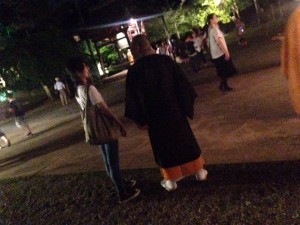
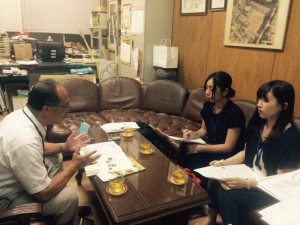
Through the interviews, the students will discover aspects of Daigoji Temple that they have not been able to discover before, and use them to solve problems.
Review of the training camp and activity plan for summer vacation
On July 9th (Thursday) and July 23rd (Thursday), classes were held to reflect on the training camp and to plan activities mainly during the summer vacation.
Professor Kasai explained how to make appointments when visiting Daigoji Temple and other related facilities that are the subject of research in this course, and how to promote “Civic Pride.” A lecture was held on “attachment to feel”.
Future activities will also be divided into three teams, and each team will be in charge of “inside Daigoji”, “around Daigoji”, and “outside Daigoji”. The team in charge of “Inside Daigoji Temple” will work on solving problems for the monks and staff of Daigoji Temple, the shops in the precincts, etc. The team in charge of the “surroundings of Daigoji Temple” will conduct research on the “Terakoya Project” and “Daigoichi,” which are jointly implemented by Daigoji Temple and other organizations. We will conduct a survey on the team in charge of “outside Daigoji”, interviews with local residents, and efforts to contribute to the community of Daigoji through nearby elementary and junior high schools.
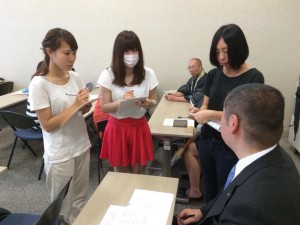
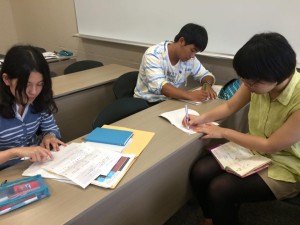
They immediately made a plan to participate in the Daigoji temple event “Manto-e” on August 5 (Wednesday), showing a very positive attitude.
training camp
On June 20th (Sat) and 21st (Sun), we had a training camp class at Daigoji Temple. The purpose of this training camp is to “find clues to discover issues.” PBL is an abbreviation of “Project/Problem Based Learning”, a style of learning that discovers problems and proposes solutions mainly through group learning. In some cases, a certain theme is set in advance for this problem discovery method, but in Professor Kasai’s class, students work together with the people of Daigoji Temple to discover problems from scratch through this training camp. We are aiming. So this training camp will be the real start.
The training camp will start at 13:00 on Saturday, June 20th. Rev. Junei Nakata, general manager of Daigoji Temple, under the theme of “the situation of Daigoji Temple and the direction it is aiming for” in order to deepen understanding of Daigoji Temple in order to discover problems and to deepen understanding of Daigoji Temple. A lecture was given by Nakata said that since its founding, Daigo-ji Temple has valued the spirit of the founder, Shoho Shonin, who respected “connections,” “nature,” and “life,” as well as gratitude and prayers for these. The Onin War and Haibutsu Kishaku during the Meiji Restoration, overcame many difficulties with the cooperation of those who believed in Daigoji Temple, the local people, and sometimes the people in power at that time. You talked about how we operate based on “prayer”.
This was followed by a lecture by Professor Kasai, who explained that learning in PBL requires not only on-site learning, but also the accumulation of knowledge through classroom lectures and preliminary surveys. In order to connect it to a solution, it is necessary to back it up with the knowledge and wisdom obtained from lectures), and the “mind” and “prayer” that value relationships, nature, and life that form the foundation of Daigoji Temple. There was a talk about the importance of always keeping in mind.
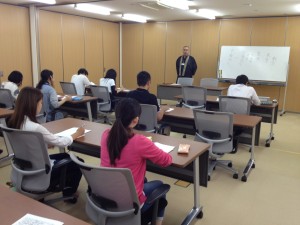
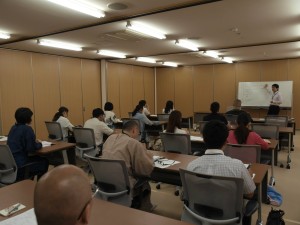
Afterwards, the students and Daigoji officials were divided into groups to break the ice. , lectures were held on the cultural properties of Daigoji Temple, how to connect with and contribute to the local community, and the class was literally integrated with Daigoji Temple.
At the end of the day, Mr. Minoru Takahashi, who is involved in the Daigoji Terakoya Project, gave a talk about his experience and advice on the project he is cooperating with Daigoji Temple.
On the following day, the group held a brainstorming session to share the issues and ideas they noticed in the previous day’s activities. Afterwards, they held a World Café to expand their ideas while sharing issues among the groups. announced for each group.
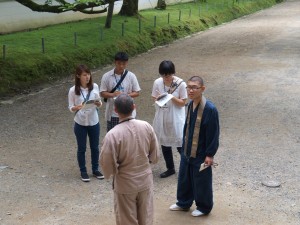
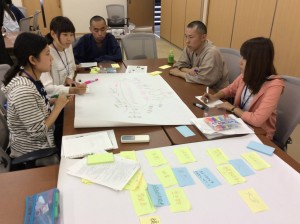
What kind of clues were the students in Professor Kasai’s class, who had a very intensive training camp class, such as participating in the sutra-copying memorial service and the morning service? It will be interesting to see what kind of solutions will be presented by embodying the clues to the issues discovered this time.
Training camp preparation
The 12th class was held on Thursday, June 11th.
Mr. Kasai’s class will hold a training camp at Daigoji Temple from June 20th (Sat) to 21st (Sun). In the previous class on June 4 (Thursday) and this class, we prepared for the training camp.
Following the check-in, which was the same as every class, Ms. Kasai explained the activities and schedule of her training camp, as well as points to keep in mind.
After Professor Kasai gave a lecture, the students were divided into three groups and began preparations for the training camp.
The activities in this group started from last week’s class, and the same members will be active in the training camp. Also, this time, three people from Daigoji Temple came, so I joined the group and participated in the work.
During the training camp, activities such as ice-breaking, walking around town, and brainstorming to come up with ideas for assignments are carried out. I plan to become
As this was the second time for this group to work together, we had a very lively discussion.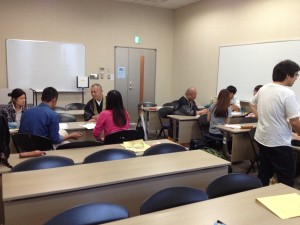
The project is approaching a major climax as to what kind of challenges can be found at the training camp.
“Town walk” experience
The 7th class was held on Wednesday, May 14th. Kasai-sensei conducts “check-in” and “check-out” at the beginning and end of each class. Each student speaks her name (nickname), “enthusiasm for class” and “review of class” for 30 seconds each. This check-in and check-out seems to have the effect of fostering a sense of fellowship and grasping the sense of time when giving a presentation. This check-in was done using a card called “Catalta”.
The main theme of this class is “walking around town”.
As the name suggests, “walking around the city” means walking around the city, but not just walking normally, but walking with the intention of discovering something. In future classes, we will have a “town walk” set in Daigoji Temple, but this time we will walk around Kyoto Station as a rehearsal in preparation for that.
First of all, Professor Kasai explained the importance of setting a theme, and the fact that what you discover does not have to be something that is intentionally highlighted by the government or region (historical site guides, tourist guide maps, etc.). We gave a lecture on the points of “walking around town”, such as the ability to discover various things. After that, make a group with 3 to 4 people and have 10 minutes strategy time. Based on the teacher’s advice earlier, we discussed areas to walk, theme setting, division of roles, etc. while looking at the guide map.
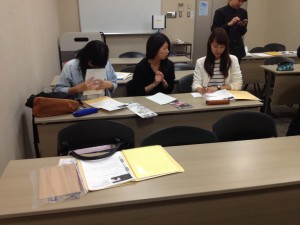
And finally, it’s time to start the 40-minute “town walk”.
One team set the theme as “atmosphere of the city” and made a rule to “speak what comes to your mind” and went around Kyoto Station. I discovered the differences in scenery in the north, south, east, and west of the station, and the characteristics of the sounds heard in each. After the event, each team gave a report on their walk around the city. There was also a discovery of
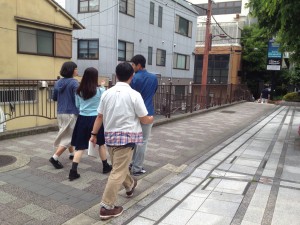
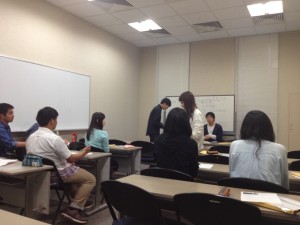
I hope that the students will make use of this experience and make new discoveries that will become a resource for Daigoji Temple and the local community from a student’s unique perspective while walking around Daigoji Temple.
1st class – First visit to Daigoji Temple
On April 16th (Wednesday), the class of Professor Kasai of Ryukoku University, who is active at Daigoji Temple, started. This course is the only full-year course (4 credits) among the Kyoto World Heritage PBL courses offered this year, and it is the course with the most number of classes among the Kyoto World Heritage PBL courses, which are held 30 times.
This time, since it was the first class, the teacher explained the annual class schedule and the attitude of studying in this subject, and then the students introduced themselves to each other. The class was held in a very friendly atmosphere, with a level of excitement that was hard to believe it was the first time.
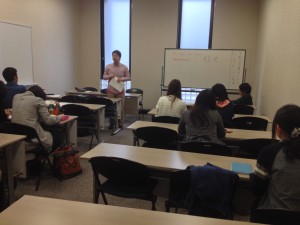
On the 18th (Sat), the second and third classes were held at Daigoji Temple. At Daigoji Temple, which was my first visit in class, I first participated in a service at Mirokudo. Afterwards, we received a message from Rev. Junei Nakata of Daigoji Temple, and were guided around the grounds by officials of Daigoji Temple. Even after the class ended, all the students voluntarily toured the precincts, and it seemed that they were already feeling a strong attachment to Daigoji Temple.
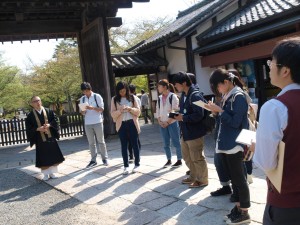
Contact information
Public Interest Incorporated Foundation Consortium of Universities Kyoto Credit Transfer Program
TEL +81-75-353-9120 FAX +81-75-353-9121
Campus Plaza Kyoto, Shimogyo-ku, Kyoto 600-8216
*Reception hours: Tuesday-Saturday 9:00- 17:00 (excluding year-end and New Year holidays)















